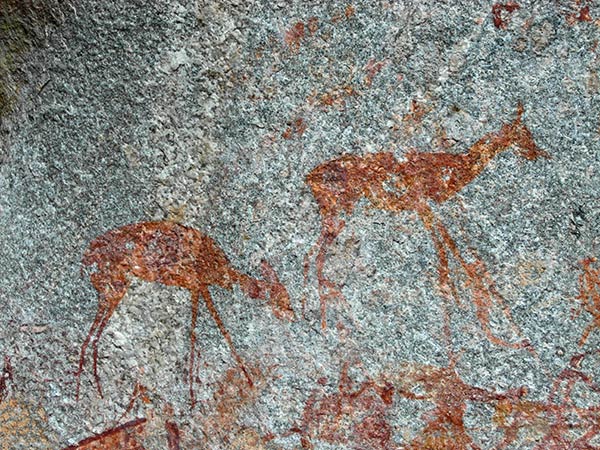
Matopo Hills Nswatugi Cave rock paintings (Enlarge)
The Matopo Hills are group of granite hills, southeast of Bulawayo, Zimbabwe, formed by river erosion and weathered into fantastic shapes and deep valleys. The hills are associated with folklore and tradition; some being venerated as dwelling places of the spirits of departed Ndebele chiefs. The hills contain numerous caves (notably Bambata, Nswatugi, and Silozwane) with Khoekhoe paintings, and there are Stone and Iron Age archaeological sites. The name may have originated from matombe or madombe, meaning "the rocks," or from matobo, "bald heads."
Locating the different caves and rock paintings in the Matopo Hills is nearly impossible on your own and the use of an experienced guide is highly recommended. A guide that I recommend, who has a long time personal interest in the archaeology of the Matopo Hills, is Ian Harmer of the company African Wanderer. Ian's family has lived in Zimbabwe for more than a dozen generations, which means he is intimately aware of all facets of life in the country. His email address is This email address is being protected from spambots. You need JavaScript enabled to view it. and his mobile phone 263-772-224069.
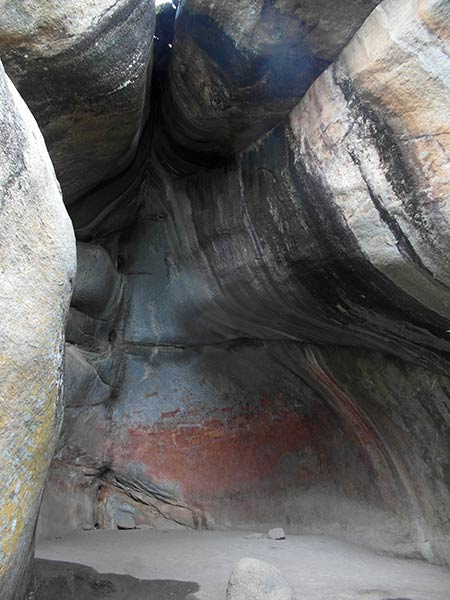
Matopo Hills Nswatugi Cave rock paintings (Enlarge)
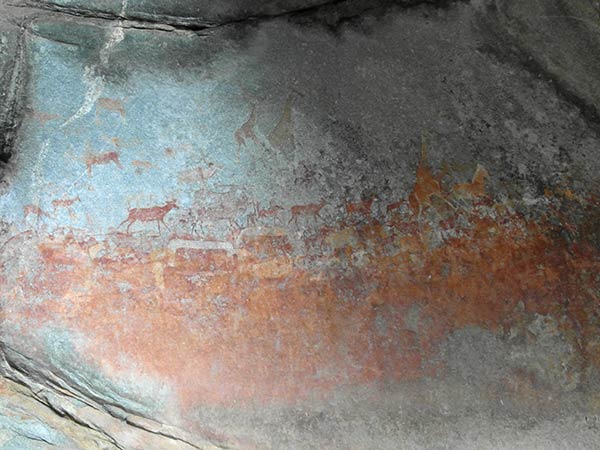
Matopo Hills Nswatugi Cave rock paintings (Enlarge)
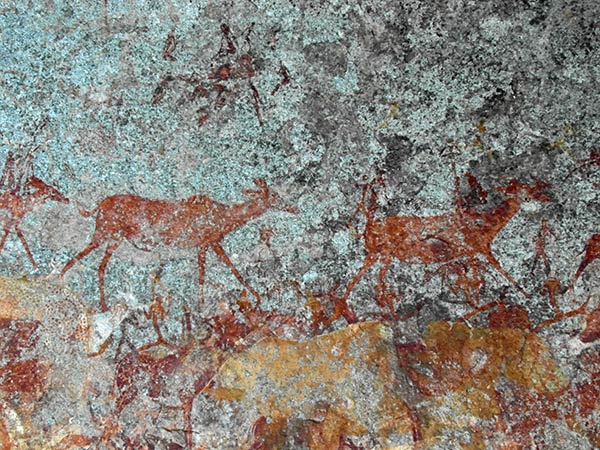
Matopo Hills Nswatugi Cave rock paintings (Enlarge)
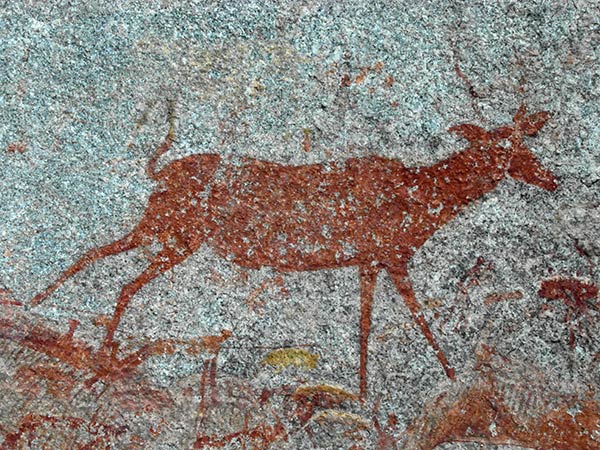
Matopo Hills Nswatugi Cave rock paintings (Enlarge)
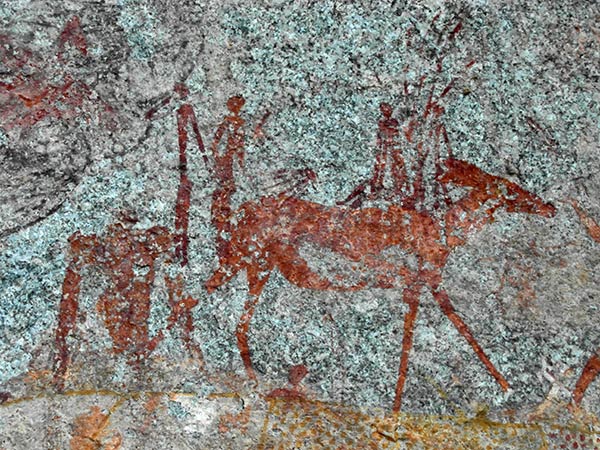
Matopo Hills Nswatugi Cave rock paintings (Enlarge)
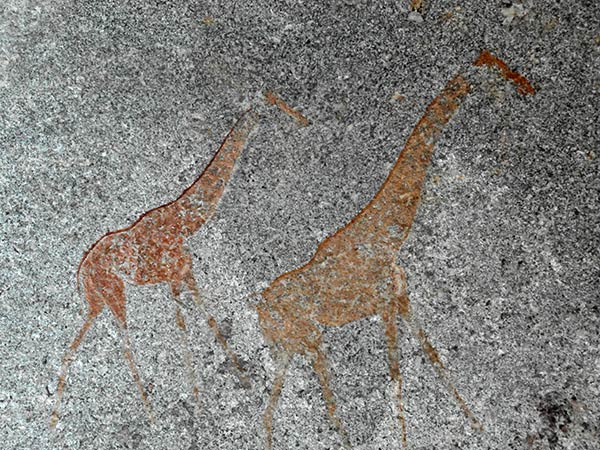
Matopo Hills Nswatugi Cave rock paintings (Enlarge)
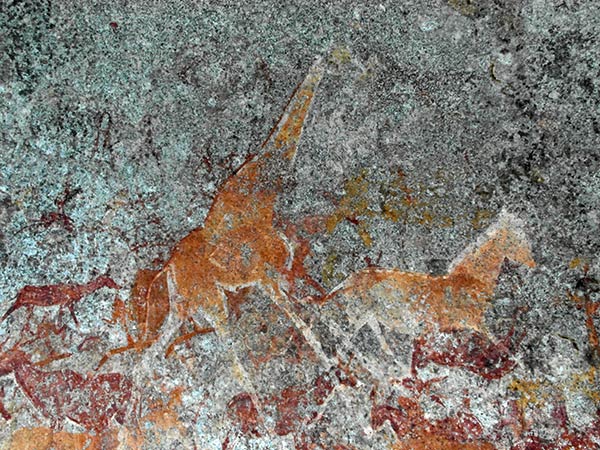
Matopo Hills Nswatugi Cave rock paintings (Enlarge)
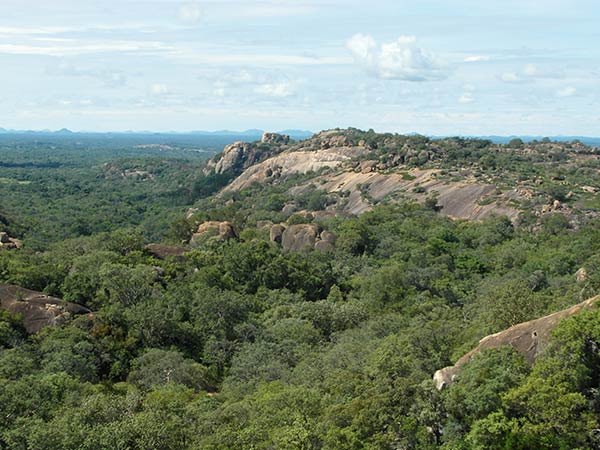
Matopo Hills, view of hills (Enlarge)
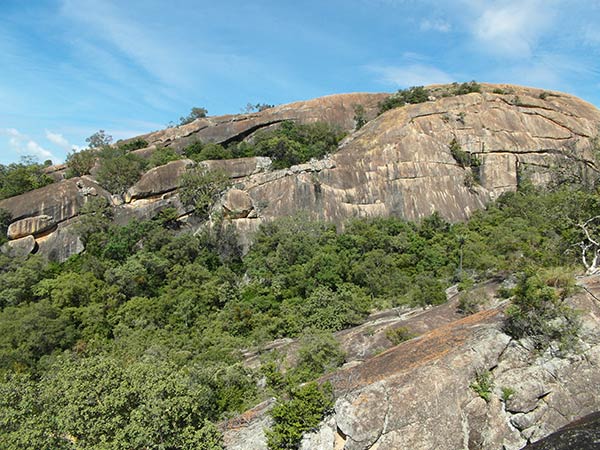
Matopo Hills, view of hills (Enlarge)
Author's note: It is inaccurate and misleading to describe and label the rock paintings and etchings in caves strewn across the vast region of southern Africa as 'rock art' for two reasons. One, while the paintings and etchings were often done with varying degrees of artistic ability, their purpose was not artistic but rather shamanic, ceremonial and therapeutic. Two, while the paintings and etchings did indeed have various shamanic, ceremonial and therapeutic functions, they are better understood to be markers of specific geographic places of power, spirit and energy. That is what is most important; whatever the (supposed) meaning of the paintings and etchings, their geographic locations are primary while the human artifacts are secondary.
 Martin Gray is a cultural anthropologist, writer and photographer specializing in the study of pilgrimage traditions and sacred sites around the world. During a 40 year period he has visited more than 2000 pilgrimage places in 165 countries. The World Pilgrimage Guide at sacredsites.com is the most comprehensive source of information on this subject.
Martin Gray is a cultural anthropologist, writer and photographer specializing in the study of pilgrimage traditions and sacred sites around the world. During a 40 year period he has visited more than 2000 pilgrimage places in 165 countries. The World Pilgrimage Guide at sacredsites.com is the most comprehensive source of information on this subject.For additional information consult:
http://www.rockartscandinavia.com/images/articles/a12walker.pdf
https://www.britannica.com/place/Matopo-Hills
http://www.africanworldheritagesites.org/cultural-places/traditional-cultural-landscapes/matobo-hills.html
http://africanrockart.org/rock-art-gallery/zimbabwe/
